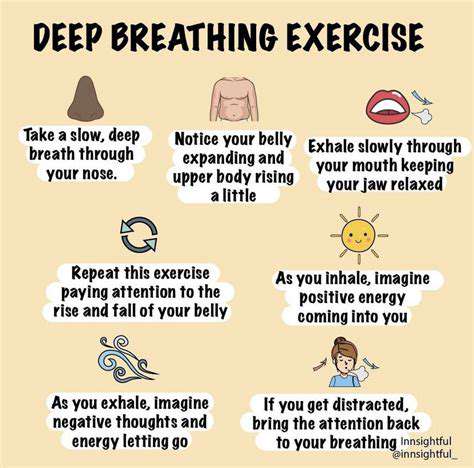Coping with a Bad Anxiety Attack: Strategies for Relief
Physical Symptoms
Our bodies often sound the alarm first when anxiety strikes. You might notice your heart racing unexpectedly, sudden shortness of breath, unexplained sweating, trembling hands, or tense muscles. These physical reactions can feel so intense they spark secondary fears about health problems. Learning to separate normal stress responses from concerning symptoms proves crucial for proper management.
Digestive troubles like stomachaches or nausea frequently accompany anxiety, along with sleep disruptions—either struggling to fall asleep or waking frequently. When we recognize these bodily signals as possible anxiety markers, we can address root causes more effectively.
Emotional Symptoms
The emotional landscape of anxiety feels equally significant. It might show up as persistent worry, irrational fears, or a looming sense of disaster. Many report feeling constantly on edge, snapping at loved ones, or struggling to focus on simple tasks. These emotional responses can seriously hinder our ability to function normally in relationships and responsibilities.
Mood swings, hopelessness, and sudden panic episodes often join this emotional storm. Acknowledging these feelings as part of anxiety's spectrum—rather than personal failings—helps people seek support without shame.
Behavioral Symptoms
Anxiety reshapes our actions in noticeable ways. Some start avoiding social gatherings or activities that trigger discomfort. Decision-making becomes agonizing, procrastination takes over, and isolation feels safer than connection. These behavioral shifts can strain relationships and stall personal growth.
Restless movements—pacing, fidgeting, inability to sit still—often betray inner turmoil. Addressing these outward patterns helps break anxiety's grip on daily functioning.
Cognitive Symptoms
Anxiety hijacks our thought processes in distinct ways. The mind races with worst-case scenarios while negative self-talk plays on loop. Concentration falters—conversations drift away, and remembering simple details becomes challenging. These cognitive effects impact performance at work and in personal pursuits.
Catastrophizing (expecting disaster around every corner) distorts reality. Recognizing these thought patterns creates opportunities to develop healthier mental habits.
Deep Breathing Exercises for Calming the Body

Benefits of Deep Breathing
Diaphragmatic breathing serves as nature's reset button for frazzled nerves. This practice activates our relaxation response, counteracting the body's emergency stress mode. Regular practitioners often report better sleep, reduced anxiety, and improved emotional balance. Focusing on breath creates mental space to process emotions calmly.
The cardiovascular benefits surprise many—slow, deep breaths naturally lower blood pressure and heart rate. For those managing heart health or preventing future issues, this simple practice offers powerful protection. Lung capacity improves with consistent practice, enhancing overall respiratory efficiency.
Techniques for Effective Deep Breathing
Experiment to find which method suits you best. One approach involves lying flat, placing one hand on your chest and another on your belly. Proper technique means your stomach rises while your chest stays still—this engages the diaphragm fully. Exhale completely, feeling your abdomen gently fall.
Sitting variations work well too—rest hands on your stomach and visualize breath filling your body from the ground up. With regular practice, these techniques become second nature, offering portable stress relief wherever you go.
Incorporating Deep Breathing into Daily Life
Start small—just 5-10 minutes daily—and gradually increase duration. Try pairing it with existing habits: morning coffee, lunch breaks, or pre-meeting preparation. This consistency rewires your nervous system for calmer responses to daily stressors.
Guided apps provide helpful structure for beginners. Like any skill, regular practice yields the best results for long-term stress management and wellbeing.
Cognitive Techniques to Challenge Negative Thoughts
Identifying Negative Thought Patterns
Spotting destructive thought loops marks the first step toward change. These automatic thoughts often involve black-and-white thinking or imagining worst possible outcomes. Awareness develops by noticing recurring themes in your mental chatter—this self-knowledge forms the foundation for change.
Journaling helps track thought triggers—specific situations, people, or emotions that spark negativity. Recognizing thoughts as mental events rather than absolute truths creates healthy distance from their emotional impact.
Challenging the Validity of Negative Thoughts
Interrogate anxious thoughts like a detective—what evidence supports them? Often they stem from outdated fears rather than current reality. Generating alternative explanations helps break their grip. For panic thoughts like I'm dying, examine the facts—racing hearts and shortness of breath are normal anxiety symptoms.
Developing Positive Self-Talk
Consciously reframe negative thoughts with balanced perspectives. Highlight past successes and current strengths—this builds emotional resilience. Supportive inner dialogue acts as psychological armor against anxiety's assaults.
Using Cognitive Restructuring Techniques
Thought records provide structure for analyzing and replacing unhelpful thinking. By documenting triggering situations, associated thoughts, and resulting emotions, patterns emerge clearly. This methodical approach helps rewire automatic negative responses over time.